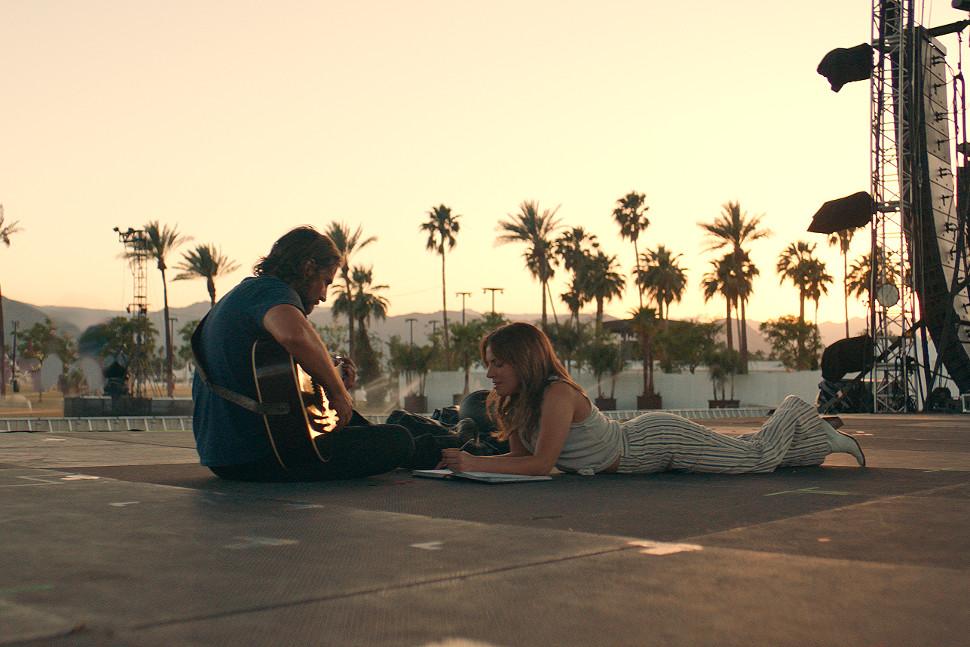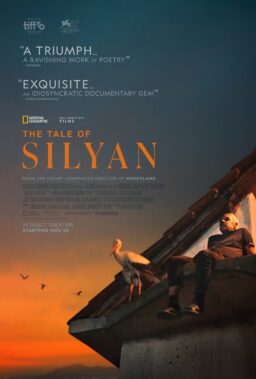As the end credits of Bradley Cooper’s “A Star is Born” were unspooling at this morning’s screening at the Venice Film Festival, a German gentleman who was sitting with some friends near me stood up, and said in a rathe loud voice, “I don’t know if I’m allowed to say this in the ‘Me Too’ era…” and while I can’t verbatim quote what he said next, it was something vaguely disparaging about the way Lady Gaga’s mouth looks when she sings. One of the new things that certain news events over the past years have created is a particular universal truth: anyone who begins a statement by proclaiming “I don’t know if I’m allowed to say this in the ‘Me Too’ era” has absolutely nothing of interest or worth to say following that proclamation.
As we all know, though, one way of looking at the story of “A Star Is Born”—and the new film starring Cooper and Lady Gaga in what deserves to be called a breakout performance (and I don’t really care how you think her mouth looks when she sings, buddy) is the fourth version of the Hollywood love/hate letter to itself—is that it’s of a woman who chooses to stay in an abusive relationship. The template is of the washed-up self-destructive idol of millions who meets and nurtures a fresh young talent, followed by a love story, followed by the further downward spiral of the old idol, whose removal from the stage brings both heartbreak and new glory to the protégé.
The new version is very smart about both contemporary showbiz and issues of addiction and abusive behavior. Eric Roth, Cooper, and Will Fetters have fashioned a script that airs out the mustier conventions of even the most recent version, the Barbra Streisand/Kris Kristofferson ‘70s picture. Finally, we get a “Star is Born” in which Jackson Maine, renamed Norman Maine, gives rehab the old college try.
Cooper proves an able director. The opening scenes show him displaying a penchant for Kubrickian one-point-perspective shots, but he’s at his best, as so many directors who came up though acting tend to be, when the camera gets close to his performers and captures their intimate interplay. Playing the dissolute country-rock star, Cooper imitates Sam Elliott’s speaking voice, which makes a different kind of sense when Elliott himself turns up playing Maine’s older brother and mess-cleaner. The movie gives the Maine character more of a back story than he’s ever had, and it’s a good one. Gaga’s Ally is a credible update of Esther Blodgett, and this “Star” uses the character’s songwriting talent and ambitions to explore notions of artistic integrity that few prior versions of “Star” had much overt concern for. But the movie is still a tear-jerker at heart. Not to disparage the talents of any individuals who worked on it (and I should emphasize that Cooper does damn well playing a musician, and Gaga is her usual disciplined marvel), but this is an example of Big Movie Studio Craft at its most well-thought out; among the many contingents of moviegoers it will please will be the “they don’t make ‘em like that anymore” crowd.

On my way into the first press screening of “The Other Side of the Wind” last night, an older and wise colleague confided that he had very limited expectations for the movie. He had seen, at some festival many years ago, some assemblies of footage shot and edited by Orson Welles of one of his grandest unfinished projects, and was unsure whether the team that came together, after years of contractual wrangling, to concoct a feature film out of the remaining footage would be able to pull a coherent rabbit out of that hat.
“But come on,” I said to my friend. “We are present at a moment in film history! We are the close-parenthesis on John O’Hara first seeing ‘Citizen Kane’!” He did allow that I was correct in this respect (or at least not entirely wrong; I think in accepting my screwball analogy he was being kind). A good hour and forty minutes later or so, we staggered from the theater, stunned in a way that only a filmmaker like Welles can finally stun you.
Which is not to say that “The Other Side of the Wind” is a masterpiece. I could write several thousand words about what’s wrong, or “wrong” with it. It takes some getting used to right from the start. Its extravagant conceit is that the film itself is cobbled together from footage in a variety of formats shot by journalists and scholars and critics, friends and foes, of Hollywood legend Jake Hanaford, a prickly character who for some reason has permitted legions of these ad hoc documentarians to shoot him at a birthday party. At this party, he intends to screen the footage of his latest film, also titled “The Other Side of the Wind.” This feature may never be completed because the studio won’t bail the director out. And his leading man, John Dale (Robert Random) has walked out on him.
Anyone familiar with Welles’ career can see the parallels between the maestro and the Hanaford character, who’s portrayed by another larger-than-life Hollywood figure, Welles’ friend John Huston.
But this movie adds layers to the damaged auteur and his predicament. Hanaford’s “Wind” is practically pornographic, a disjointed surreal widescreen color fever dream in which a frequently nude Oja Kodar (whose unnamed character, a Native American, is given persistent disparaging racialist nicknames by Hanaford and crew) pursues long-haired biker type Dale. Dale’s defection has hit Hanaford hard, and in ways that are difficult to process. One of Hanaford’s inquisitors, a film journo played by Susan Strasberg, really presses a theory that Hanaford is a repressed homosexual. And the movie itself doesn’t overtly disagree.
The narrative material is doled out over a dizzyingly frenetic use of film language. Image quality ranges from home-movie crude to B-movie baroque, with incredibly fast cutting and disorienting close-ups galore (think of the way Welles portrayed Glenn Anders in “Lady From Shanghai”). It takes a while too, to acclimate oneself to the VERY ‘70s looks of everyone in the movie, and the cavalcade of Welles repertory players, all of whom have heard the chimes at midnight more than once at this point in their lives.
“The Other Side of the Wind” is a fascinating film, and watching this assemblage it occurred to me that it remained unfinished by Welles in his lifetime by design. The movie, for as much as it lashes out at the film culture that Welles had no small part in creating, is also a vessel for Welles’ own self-loathing. Whether it was because he was called upon to shoot at any old time or because he was determined to be rigorously honest for his friend’s vision, which he may well have shared on general principle, John Huston gives an utterly vanity-free performance. By which I mean that the man looks like hell throughout. Neither he nor Welles were big on self-care by this juncture of their lives, and their shared love/hate relationship to cinema and the industry seems here to be matched by their shame at the hypocrisies and cruelties they inflicted to realize their art. Speaking about Jean-Luc Godard, Welles approvingly cited Godard’s “contempt” for the cinema. In this film, Godard (who once said of Welles “all of us will always owe him everything”) meets his match in this department—finally.












